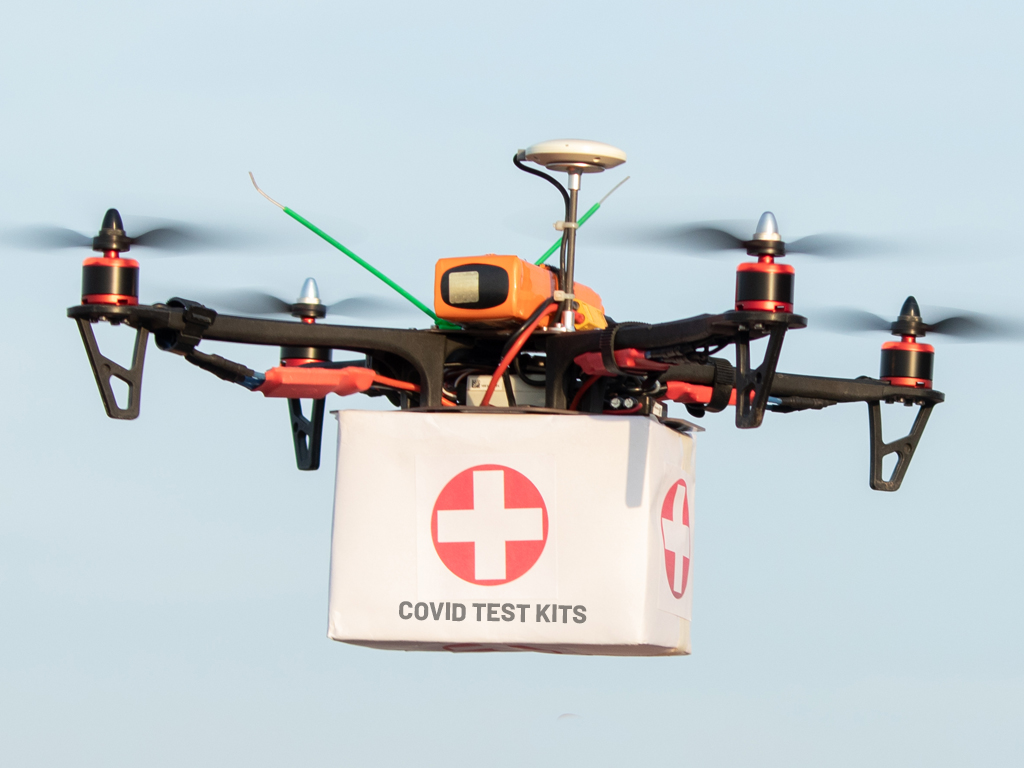From truck to drone to doorstep: Better way to deliver COVID-19 kits?


Researchers at the Texas A&M University School of Public Health have developed a new COVID-19 test distribution method that uses drones to quickly deliver at-home diagnostic tests to individuals who suspect they have the coronavirus.
In a new article published in the Journal of Intelligent & Robotic Systems, Murray Côté, associate professor at the School of Public Health, and colleagues from the University of Houston developed a new technique for scheduling the delivery of COVID-19 diagnostic tests using a truck to dispatch the drones and drones to deliver the tests. The researchers tested various scenarios to better understand the capability of their approach.
Côté and colleagues’ approach examine their problem as separate truck and drone components. First, they optimize the truck schedule to minimize travel distance and then focus on minimizing drone delivery time. The first stage of their proposed method works to find a feasible set of truck and drone routes. The second stage uses a heuristic algorithm that tries different combinations of routes to find improvements to their initial solution.
Using a real-world scenario, they were able to find a good routing schedule within approximately one hour of computing time. The researchers then developed a way of showing their method’s effectiveness based on the total time needed to complete the deliveries, the number of people involved in the process and the virus transmission rate compared to face-to-face testing. They found that the proposed truck and drone delivery method could reduce transmission during testing by a factor of 7.5. For example, if the rate of transmission was 100/day, the proposed research has the potential to reduce this rate to 13.3/day.
Their study demonstrated the effectiveness of the proposed delivery scheduling method, which could also be used in other applications such as testing of other infectious diseases like influenza.

